Abiu, Caimito
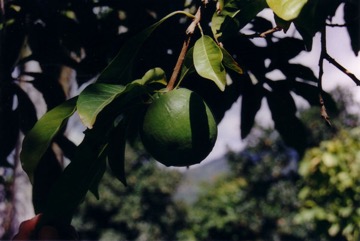
A tropical plant. It suits the hot, wet tropical lowlands. It needs a warm climate and year round moisture. It is a tropical plant, but will grow in subtropical places. It enjoys wet soil. It grows naturally in the Amazon and Andes. It grows to 1200 m in the Andes. It cannot tolerate frost. It suits hardiness zones 10-11.
Also known as:
Abiero, Aguaycillo, Asepokoballi, Caimitillo, Caimito, Caimo, Cauje, Caymito, Coloradillo de la bajura, Ingi-oedoe, Luma, Pepeboiti, Temare, Yaas, Yellow star apple
Synonyms
- Achras caimito Ruiz & Pav.
- Achras guapeba Casar
- Guapeba laurifolia Gomes
- Guapeba caimito (R.& P.) Pierre
- Labatia caimito (R.&.P.) C.Martius
- Labatia reticulata Mart.
- Labatia lasiocarpa Mart.
- Lucuma caimito (Ruiz & Pav.) Roem. & Schult.
- Lucuma laurifolia (Gomes) DC.
- Lucuma laurifolia var. reticulata (Mart.) DC.
- Lucuma lasiocarpa (Mart.) DC
- Lucuma ternata Kunth.
- Pouteria laurifolia (Gomes) Radlk.
- Pouteria lasiocarpa (Mart.) Radlk.
- Pouteria leucophaea Baehni
- Pouteria caimito var. laurifolia (Gomes) Baehni
- Pouteria temare (Kunth.) Aubr.
- Richardella temare (Kunth.) Pierre
Edible Portion
- Fruit, Kernel, Nuts
Where does Abiu grow?
Found in: Amazon, Andes, Asia, Australia, Bolivia, Brazil, Central America, Colombia, Costa Rica, Ecuador, French Guiana, Guianas, Guyana, Hawaii, Malaysia, Mexico, Nicaragua, Pacific, Panama, Peru, SE Asia, South America, Suriname, Trinidad, United States, Venezuela
Notes: There are about 150-320 Pouteria species. They grow in the tropics.
Status: It is a cultivated food plant. Fruit are sold in local markets.
Growing Abiu, Caimito
Cultivation: Plants are grown from seed. Seed germinate easily. Seedling trees vary in quality. Grafting and air-layering can also be used. Fresh seed are planted and germinate in 4-6 weeks. Some trees are self fertile and others need cross pollinating.
Edible Uses: The ripe fruit is eaten raw. They are also used for desserts. Occasionally they are used in ice-cream.
Production: Trees will produce fruit after 7-10 years from seeds and after 3 years from grafts. Mature trees can produce 100-1000 fruit per year. Fruit mature in about 180 days.
Nutrition Info
per 100g edible portion| Edible Part | Energy (kcal) | Protein (g) | Iron (mg) | Vitamin A (ug) | Vitamin c (mg) | Zinc (mg) | % Water |
|---|---|---|---|---|---|---|---|
| Fruit | 95 | 2.1 | 1.8 | - | 49 | - | 74.1 |
Abiu, Caimito Photos

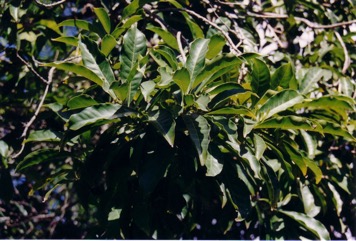
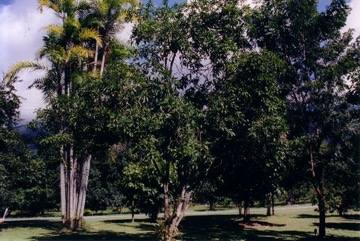
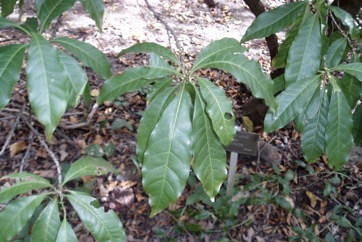
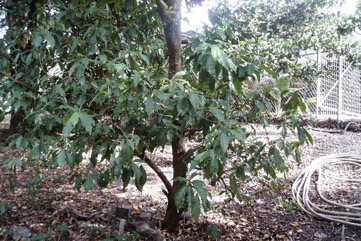
References
Arora, R. K., 2014, Diversity in Underutilized Plant Species - An Asia-Pacific Perspective. Bioversity International. p 82
Asprilla-Perea, J., & Diaz-Puente, J.M., 2018, Traditional use of wild edible food in rural territories within tropical forest zones: A case study from the northwestern Colombia. New Trends and Issues Proceedings on Humanities and Social Sciences [Online]. 5(1), 162–181.
Baehni, C. & Bernardi, L., 1970, Flora of Peru. Vol. 8 Part V-A No. 3. Field Museum Natural History. Chicago. p 157
Barfod, A. S. & Kvist, L. P., 1996, Comparative Ethnobotanical Studies of the Amerindian Groups in Coastal Ecuador. The Danish Academy of Sciences and Letters. p 79
Bennett, B. C., 1990, Useful Plants of Amazonian Ecuador. US Agency for International Development. Fifth Progress Report. New York Botanical Gardens. p 39
Cundall, P., (ed.), 2004, Gardening Australia: flora: the gardener's bible. ABC Books. p 1078
Darley, J.J., 1993, Know and Enjoy Tropical Fruit. P & S Publishers. p 104
Facciola, S., 1998, Cornucopia 2: a Source Book of Edible Plants. Kampong Publications, p 228
Grandtner, M. M., 2008, World Dictionary of Trees. Wood and Forest Science Department. Laval University, Quebec, Qc Canada. (Internet database http://www.wdt.qc.ca)
Grandtner, M. M. & Chevrette, J., 2013, Dictionary of Trees, Volume 2: South America: Nomenclature, Taxonomy and Ecology. Academic Press p 523
Hedrick, U.P., 1919, (Ed.), Sturtevant's edible plants of the world. p 387
Hermandez Bermejo, J.E., and Leon, J. (Eds.), 1994, Neglected Crops. 1492 from a different perspective. FAO Plant Production and Protection Series No 26. FAO, Rome. p17
Hibbert, M., 2002, The Aussie Plant Finder 2002, Florilegium. p 239
Hunter, D., et al, 2019, The potential of neglected and underutilized species for improving diets and nutrition. Planta (2019) 250:709-729
Kermath, B. M., et al, 2014, Food Plants in the Americas: A survey of the domesticated, cultivated and wild plants used for Human food in North, Central and South America and the Caribbean. On line draft. p 685
Kiple, K.F. & Ornelas, K.C., (eds), 2000, The Cambridge World History of Food. CUP p 1713
John, L., & Stevenson, V., 1979, The Complete Book of Fruit. Angus & Robertson p 93, 284
Lorenzi, H., 2002, Brazilian Trees. A Guide to the Identification and Cultivation of Brazilian Native Trees. Vol. 02 Nova Odessa, SP, Instituto Plantarum p 333
Lorenzi, H., Bacher, L., Lacerda, M. & Sartori, S., 2006, Brazilian Fruits & Cultivated Exotics. Sao Paulo, Instituto Plantarum de Estuados da Flora Ltda. p 299
Macmillan, H.F. (Revised Barlow, H.S., et al) 1991, Tropical Planting and Gardening. Sixth edition. Malayan Nature Society. Kuala Lumpur. p 306
Martin, F. W., et al, 1987, Perennial Edible Fruits of the Tropics. USDA Handbook 642 p 61
Menninger, E.A., 1977, Edible Nuts of the World. Horticultural Books. Florida p 33
Milow, P., et al, 2013, Malaysian species of plants with edible fruits or seeds and their evaluation. International Journal of Fruit Science. 14:1, 1-27
Morton, Julia F., 1987, Fruits of Warm Climates. Creative Resources Systems, Inc. . p. 406
Norrington, L., & Campbell, C., 2001, Tropical Food Gardens. Bloomings Books. p 90
NYBG herbarium "edible"
Paz, F. S., et al, 2021, Edible Fruit Plant Species in the Amazon Forest Rely Mostly on Bees and Beetles as Pollinators. Journal of Economic Entomology, XX(XX), 2021, 1–13
Pennington, T.D., 1990, Sapotaceae in Flora Neotropica Monograph 52. New York Botanical Gardens. p 475
Philips, O., 1992, The potential for harvesting fruits in tropical rainforests: new data from Amazonian Peru. Biodiversity and Conservation 2, 18-38
Pilz, G. E., 1981, Sapotaceae of Panama. Annals of Missouri Botanical Garden. Vol. 68. No. 1 p 177
Popenoe,
Recher, P, 2001, Fruit Spirit Botanical Gardens Plant Index. www.nrg.com.au/~recher/ seedlist.html p 3
Segura, S., et al, 2018, The edible fruit species in Mexico. Genet Resour Crop Evol (2018) 65:1767–1793
Sitzungsber. Math.-Phys. Cl. Koenigl. Bayer. Akad. Wiss. Munchen 12:312. 1882
Smith, N., et al, 2007, Amazon River Fruits. Flavors for Conservation. Missouri Botanical Gardens Press. p 232
Tankard, G., 1990, Tropical fruit. An Australian Guide to Growing and using exotic fruit. Viking p 12
USDA, ARS, National Genetic Resources Program. Germplasm Resources Information Network - (GRIN). [Online Database] National Germplasm Resources Laboratory, Beltsville, Maryland. Available: www.ars-grin.gov/cgi-bin/npgs/html/econ.pl (10 April 2000)
van Andel, T., 2000, Useful plants of Guyana. Non-timber forest products of the North-West District of Guyana. Part 2. A Field Guide. Tropenbos-Guyana Programme. p 305
Van den Eynden, V., et al, 2003, Wild Foods from South Ecuador. Economic Botany 57(4): 576-603
van Roosmalen, M.G.M., 1985, Fruits of the Guianan Flora. Utrecht Univ. & Wageningen Univ. p 408
Vasquez, R. and Gentry, A. H., 1989, Use and Misuse of Forest-harvested Fruits in the Iquitos Area. Conservation Biology 3(4): 350f
Villachica, H., (Ed.), 1996, Frutales Y hortalizas promisorios de la Amazonia. FAO, Lima. p 71
Wickens, G.E., 1995, Edible Nuts. FAO Non-wood forest products. FAO, Rome. p152
World Checklist of Useful Plant Species 2020. Royal Botanic Gardens, Kew
www.colecionandofrutas.org
Zambrana, P, et al, 2017, Traditional knowledge hiding in plain sight – twenty-first century ethnobotany of the Chácobo in Beni, Bolivia. Journal of Ethnobiology and Ethnomedicine (2017) 13:57